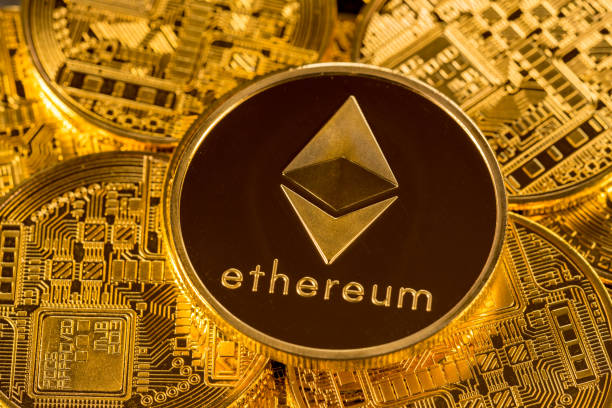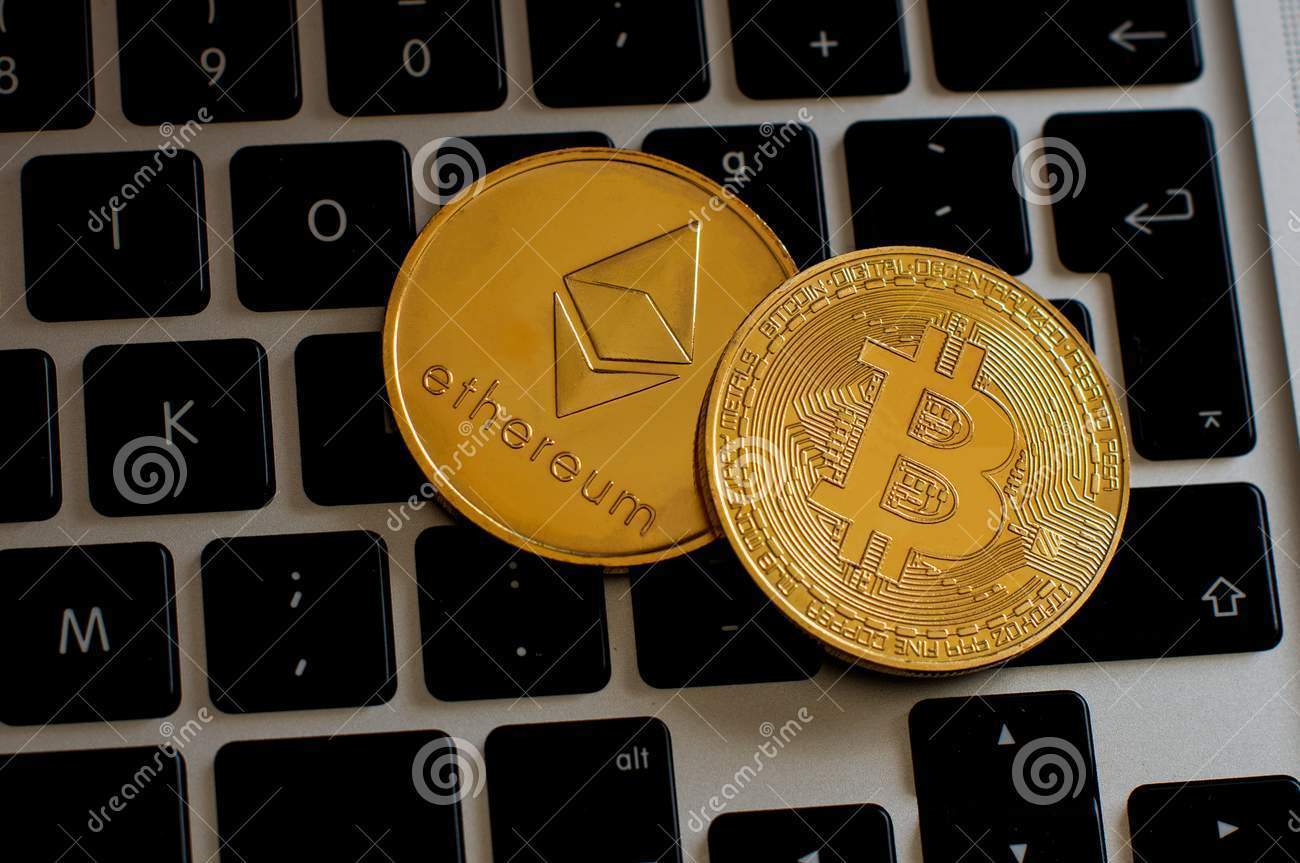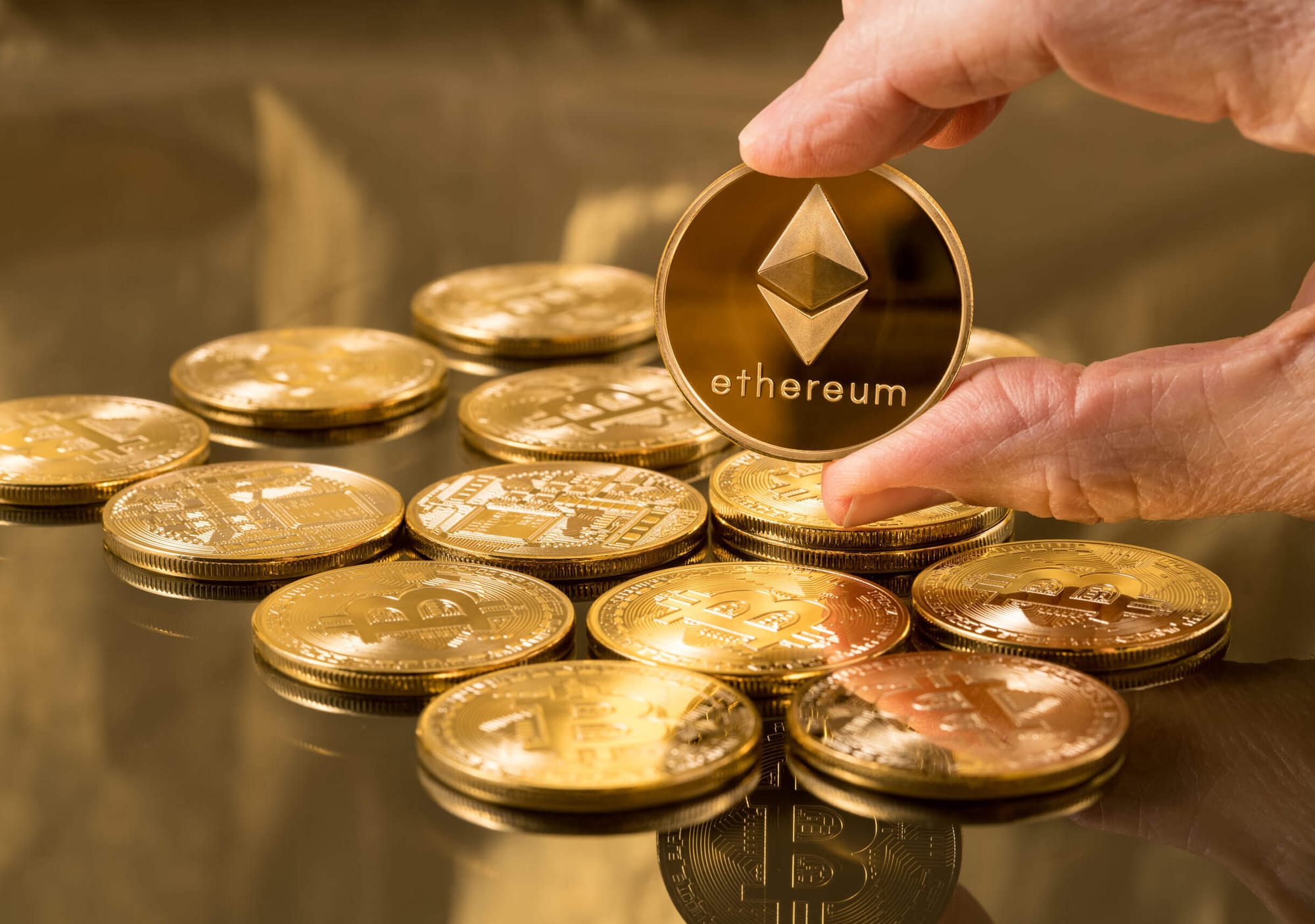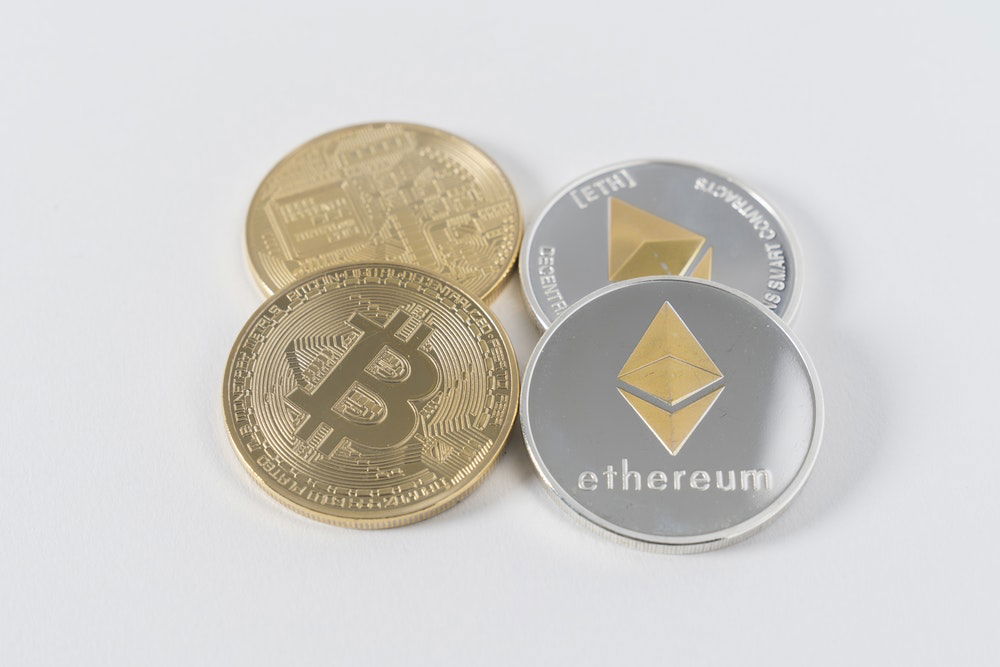WHAT IS ETHEREUM FOR BEGINNERS
WHAT IS ETHEREUM FOR BEGINNERS
What is Ethereum?

“Ethereum is a decentralized platform for applications that run exactly as programmed without any chance of fraud, censorship, or third-party interference.”
Ethereum is a global computing network operating according to rules defined by Ethereum software.
Those rules allow the Ethereum network to be programmed to complete certain types of computing tasks, with every computer on the network completing the task in parallel to ensure it is done correctly. Generally the tasks involve money.
The creator of Ethereum, Vitalik Buterin, has likened it to a global smartphone that can be programmed to operate according to the apps built on top of it. The apps are called Dapps because they are run by a decentralized network of computers.
Mr. Buterin says he chose the name because it refers to “the hypothetical invisible medium that permeates the universe and allows light to travel.” He announced Ethereum in late 2013, but it didn’t go into operation until 2015.
At its simplest, Ethereum is an open software platform based on blockchain technology that enables developers to build and deploy decentralized applications. (Buy Ethereum)
Ether is a cryptocurrency whose blockchain is generated by the Ethereum platform. Ether can be transferred between accounts and used to compensate participant mining nodes for computations performed. Ethereum was proposed in late 2013 by Vitalik Buterin, a cryptocurrency researcher and programmer
Is Ethereum similar to Bitcoin? Well, sort of, but not really.

Like Bitcoin, Ethereum is a distributed public blockchain network. Although there are some significant technical differences between the two, the most important distinction to note is that Bitcoin and Ethereum differ substantially in purpose and capability. Bitcoin offers one particular application of blockchain technology, a peer to peer electronic cash system that enables online Bitcoin payments. While the Bitcoin blockchain is used to track ownership of digital currency (bitcoins), the Ethereum blockchain focuses on running the programming code of any decentralized application.
In the Ethereum blockchain, instead of mining for bitcoin, miners work to earn Ether, a type of crypto token that fuels the network. Beyond a tradeable cryptocurrency, Ether is also used by application developers to pay for transaction fees and services on the Ethereum network.
What can Ethereum are used for?

Ethereum enables developers to build and deploy decentralized applications. A decentralized application or Dapp serve some particular purpose to its users. Bitcoin, for example, is a Dapp that provides its users with a peer to peer electronic cash system that enables online Bitcoin payments. Because decentralized applications are made up of code that runs on a blockchain network, they are not controlled by any individual or central entity.
Any services that are centralized can be decentralized using Ethereum. Think about all the intermediary services that exist across hundreds of different industries. From obvious services like loans provided by banks to intermediary services rarely thought about by most people like title registries, voting systems, regulatory compliance and much more.
Ethereum can also be used to build Decentralized Autonomous Organizations (DAO). A DAO is fully autonomous, decentralized organization with no single leader. DAO’s are run by programming code, on a collection of smart contracts written on the Ethereum blockchain. The code is designed to replace the rules and structure of a traditional organization, eliminating the need for people and centralized control. A DAO is owned by everyone who purchases tokens, but instead of each token equating to equity shares & ownership, tokens act as contributions that give people voting rights.
The Ethereum Virtual Machine

Before the creation of Ethereum, blockchain applications were designed to do a very limited set of operations. Bitcoin and other cryptocurrencies, for example, were developed exclusively to operate as peer-to-peer digital currencies.
Developers faced a problem. Either expand the set of functions offered by Bitcoin and other types of applications, which is very complicated and time-consuming, or develop a new blockchain application and an entirely new platform as well. Recognizing this predicament, Ethereum’s creator, Vitalik Buterin developed a new approach.
Ethereum’s core innovation, the Ethereum Virtual Machine(EVM) is a Turing complete software that runs on the Ethereum network. It enables anyone to run any program, regardless of the programming language given enough time and memory. The Ethereum Virtual Machine makes the process of creating blockchain applications much easier and efficient than ever before. Instead of having to build an entirely original blockchain for each new application, Ethereum enables the development of potentially thousands of different applications all on one platform.
Ethereum is not a virtual currency?
The Ethereum network has its own virtual currency, Ether. In the simplest sense, Ether are needed to pay the other computers on the network to complete tasks. It isn’t free to use the network.
People have also decided to buy and hold Ether, betting that it will become more valuable as more people want to use the network and need Ether to pay for the network’s computing power.
What does Ethereum have to do with Bitcoin?

Mr. Buterin was a Bitcoin aficionado, and he was inspired by its success. But he set out to build something that could do more than Bitcoin: He wanted to build a system that would make it possible to program more complex financial transactions.
The shared records of the Ethereum network — of every transaction and computation it has ever performed — are known as a blockchain, just as the shared records of all Bitcoin transactions are known as a blockchain. But Ethereum’s blockchain database is totally independent of Bitcoin’s blockchain.
What are the benefits of Ethereum decentralized Platform?
Because decentralized applications run on the blockchain, they benefit from all of its properties.
Immutability – A third party cannot make any changes to data.
Corruption & tamper proof – Apps are based on a network formed around the principle of consensus, making censorship impossible.
Secure – With no central point of failure and secured using cryptography, applications are well protected against hacking attacks and fraudulent activities.
Zero downtime – Apps never go down and can never be switched off.
What apps are currently being developed on Ethereum?
The Ethereum platform is being used to create applications across a broad range of services and industries. But developers are in unchartered territory, so it’s hard to know which apps will succeed and which ones will fail. Here are a few exciting projects.
Weifund provides an open platform for crowdfunding campaigns that leverages smart contracts. It enables contributions to be turned into contractually backed digital assets that can be used, traded or sold within the Ethereum ecosystem.
Uport provides users with a secure and convenient way to take complete control of their identity and personal information. Instead of relying on government institutions and surrendering their identities to third parties, users control who can access and use their data and personal information.
BlockApps is looking to provide the easiest way for enterprises to build, manage and deploy blockchain applications. From the proof of concept to full production systems and integration with legacy systems, Blockapps provides all the tools necessary to create private, semi-private and public industry-specific blockchain applications.
Provenance is using Ethereum to make opaque supply chains more transparent. By tracing the origins and histories of products, the project aims to build an open & accessible framework of information so consumers can make informed decisions when they buy products.
Augur is an open-source prediction & forecasting market platform that allows anyone to forecast events and get rewarded for predicting them correctly. Predictions on future real world events, like who will win the next US election, are carried out by trading virtual shares. If a person buys shares in a winning prediction, they receive monetary rewards.
To view other projects currently in development on Ethereum, click here.
A future of unimagined possibilities for Ethereum
Despite the fallout from The DAO hack, Ethereum is moving forward and looking to a bright future. By providing a user-friendly platform that enables people to harness the power of blockchain technology, Ethereum is speeding up the decentralization of the world economy. Decentralized applications have the potential to profoundly disrupt hundreds of industries including finance, real estate, academia, insurance, healthcare and the public sector amongst many others.
To avoid many of these risks, it is recommended to differentiate your portfolio and hedge risks. If you do not know how to do this, then there are special platforms.
Top 3 Ethereum Project Price Predictions for 2018
During the past couple of years, cryptocurrencies have garnered the attention of every investor, especially after the meteoric rise of currencies like Bitcoin and the Ether. For example, in December 2015, a single Bitcoin was worth somewhere around $440, while the same Bitcoin was worth $2600 when I first wrote this article in July 2017 and was worth $9,500 when I updated this article in 29th of November 2017 and now is worth $7,900. Today Bitcoin was between $7,900 – $8,500 a usual fluctuation I would say.
This increase over a year and a half can be compared with the one made by the Ether, Bitcoin’s primary rival in the cryptocurrency sector. This article intends to look at 3 Ethereum price predictions for 2018. Speaking of that, 120 days ago Ethereum price was $300 and now is a bit over $800 (not bad right?). But lets not forget that couple of days ago it was $1,400. Be very cautious when investing in cryptocurrency.
What are the Ethereum price predictions for 2018?
Keep in mind that attempting to offer a short term prediction for the price of Ether is a difficult endeavor. For starters, the price of single Ether is so volatile that it can lose 25% of its value in one day, only to regain it in the next. The most recent example is, 120 days ago was a bit under $300 and now is $800. But there was a lot of volatility in the last two months with Ethereum going to as low as $550 and back to $770, and even at $1,440 in early January 2018 and now at $800.
This volatility, as well as the novelty of this currency – Ethereum was started 2014 – drain technical analysis from any potency it might have in making Ethereum price predictions for 2018. Rendering any forecast suspicious at best. Therefore, all the following predictions take a long-term look at things.
1. The Price of Ether will break the $2000 Benchmark (or $5,000 in my opinion)
When I first wrote this Ethereum prediction for 2018 my colleagues reading this article considered myself crazy, now Ethereum price should reach $2,000 in the next three months. If you ask me, the price of a single Ethereum can go even up to $5,000 by the end of 2018. Ethereum was $10 in January 2017 and now is around $800, do you think thats far from $5,000?
Keep in mind, to reach $2,000 it should have a market cap of 200 billions. It can go even in a single day to $2,000. Thats my prediction.
According to the website Investing Haven, the price of an Ether should reach $1000, if not by 2018 then at least by 2020. That was a very conservative Ethereum price prediction for 2018 in my opinion, considering their currency’s fluctuation. The site’s research team bases their forecast on three fundamental factors:
a. The current and future supply of Ethers
There are currently 96 million coins of Ether in circulation. Although this number is likely to increase over the next couple of years, it will probably flatline after that. Which means that the developers in charge of Ethereum will make sure that the number of circulating coins stays constant.
b. Ether applications
The edge Ether has over Bitcoin is the ability to use smart contracts. These are contracts that are automatically executed without any human intervention the instant their terms are met.
However, Ethereum also permits developers to build decentralized apps, also known as dapps, on top of its blockchain technology. Interestingly, the more apps are built, the more valuable the Ether becomes.
The research team at Investing Haven expects that 5 to 7 years from now, we will see a 20 to 30-fold increase in the number of decentralized blockchain apps from the numbers we have today.
c. Ether demand
Demand for Ether will be driven by one of two things. Either for its functionality as a currency that is built on a blockchain with several applications. Or as a possible investment vehicle that keeps appreciating in value.
When it comes to the functionality of Ether, the technology behind smart contracts is what interests people most. However, as we just saw, the building of new applications on top of the Ethereum blockchain will also drive up demand.
2. Ethers May Very Well Overtake Bitcoin

I wrote this headline in June 2017, not sure if I should keep it when I will update the article next time. The price of an Ether should outperform that of a Bitcoin for the coming duration. What this means is that a dollar invested in Ether will return a higher ROI than investing the same dollar in Bitcoin. This indeed can be hard to believe in January 2018 when looking at Bitcoin price, but we all know that less than 10 weeks ago it was under $6,000. Most likely Bitcoin it’s being used by short term investors these days. Also, the assertion is based on the growth of Ethereum between 2015-2017 while Bitcoin was between 2009-2017.
In fact, the CEO of hedge fund Polychain Capital, Olaf Carlson-Wee, is of the opinion that the entire market capitalization of Ethereum will exceed that of Bitcoin by the end of this year. At least, that’s his Ethereum price predictions for 2018. If it exceeds it, price will triple.
There is plenty of evidence to support Olaf’s view. On the one hand, the previously mentioned 20-fold explosion of Ether in 4 months versus the 8.5 times growth of Bitcoin in a year and a half.
Besides that, the fact that Bitcoin has lost almost half of its market share to Ethereum during the past four months. To put matters into perspective, four months ago, 90% of all money invested in cryptocurrency was invested into Bitcoin.
Curiously, this number has dropped to somewhere around 45%. Conversely, Ethereum’s share of the total money invested has increased four times in size, making it approach the 30% area.
Another indicator showing that Ether can overtake Bitcoin can be found by looking at who’s backing each type of currency, as well as why they are backing said currency. Bitcoin’s focus on payment technology makes it popular with governments, such as Japan’s and China’s governments.
On the other hand, Ethereum’s smart contract technology makes corporations very interested in its real world applications. For example, a new coalition by the name of the Enterprise Ethereum Alliance (EEA) has sprung up with the explicit objective of facilitating and fostering the growth of the Ether.
The Enterprise Ethereum Alliance consists of more than 86 firms, including JP Morgan and Microsoft. The endorsement of Ether by such heavy hitters only goes to show the amount of potential in this technology.
3. The Future of Ethereum Isn’t All Rainbows and Butterflies
Despite the extremely bullish sentiment most of the market has towards Ether, the cryptocurrency still has some major hurdles to overcome before we can say that it is here to stay.
First of all, Ether might have several differences to Bitcoin, yet it still runs on blockchain technology. This means that the same problems, that all current blockchain technologies face, plague it too, mainly scalability.
When we are talking about scalability, our primary concern is whether the increased number of users will adversely affect the transaction time or not. Simply put, when more people use the technology, there are more transactions up for registering and putting down in the ledger.
This increase in the number of transactions means that any one transaction will wait in a long queue before going into a block. Without going into details, this problem has created what is called the fork problem. And there is no agreement on how to solve it.
Another issue with Ether is the possibility of cloning the technology. After all, any company can start its own blockchain based cryptocurrency tomorrow. The only thing conferring value on any currency is the consensus of the community using said currency.
As a result, it becomes a bit difficult to place one’s full faith in a single digital currency, without worrying about another currency sprouting up and usurping the one we were holding on to.
Naturally, these problems, if left unsolved, jeopardize the future of Ether, hence making any Ethereum price predictions for 2018 problematic. So the question is this: will these issues find solving? Or is a new currency going to come to light that doesn’t have these problems in the first place?
Conclusion
The scene of digital currencies is a very nascent one, and it still has a long way to go. The general outlook is quite bullish, especially when it comes to the two main contenders: Bitcoin and Ether. Furthermore, the outlook on Ether is even more positive than that of Bitcoin.
The optimists believe that Ether should experience a positive increase within the coming couple of years, letting it pass Bitcoin on the way. Nevertheless, the space is fraught with problems that don’t have an easy fix. And some skeptics worry about what these problems could mean for the entire space.
Naturally, making Ethereum price predictions for 2018 is not an easy feat. And any forecast is liable to overlook a thing or two. Please share your opinions with us in the comments below, and feel free to ask any questions you might have.
Ethereum-Bitcoin is still have biggest marketcap, but I think Ethereum will become number shortly. This is by far the most important coin to invest in. It will serve as the basis of an entire ecosystem of “DApps” (Decentralized Apps). In the same way that Apps were the big thing in the past decade, DApps will become the next big thing. CryptoNewsTrends The reason for this is that all the DApps can communicate with each other, since they are built on the same blockchain. This allows for efficient cross-industry interactions which were never possible until now. It’s like a global supercomputer that can communicate cross-industry.
There are already almost half as many transactions on the Ethereum blockchain as the Bitcoin blockchain, and Ethereum is growing exponentially, while Bitcoin has reached its maximum capacity for now. Cryptocurrencies, like social networks, have extremely strong network effects. As the adoption of Ethereum continues to grow, its utility and value will grow exponentially..
As you can see from chart above, Bitcoin was experiencing rapid growth until the beginning of 2017. The following chart of the Bitcoin mempool will explain why the growth has flatlined.Extremely bullish? Well in this case higher is not better. The mempool consists of all the data from Bitcoin transactions waiting to be confirmed.
There is currently a backlog of almost 3,000,000 transactions! Bitcoin can only process a maximum of 7 transactions per second so it would take approximately 5 days to clear the backlog if no new transactions are made. Even though more and more people are introduced to Bitcoin every day, the network can’t handle any more transactions. Because of this, many developers have chosen to develop their apps on the Ethereum blockchain instead. In this case, they actually moved from the Bitcoin blockchain to the Ethereum blockchain because of the network congestion and high fees.
Even though the price of Ethereum has already appreciated significantly in 2017, there is still 10x, maybe even 100x long-term upside from current levels. Ethereum hasn’t come close to mainstream adoption yet, but there are hundreds, possibly thousands of applications in development. Many of these applications are focused on making Ethereum more accessible and user friendly. The World Wide Web was extremely inaccessible in the early days until Netscape came along and made it much easier for the general public to browse the internet. As the experience of browsing the web became much more accessible, usage exploded.
The price of bitcoin was $4.99 on 5/15/2012 and $1726.46 on 5/16/2017. During the same 5 year period, the price of bitcoin increased by 34,598%, outpacing transaction growth by a factor of 16.2. If you ignore the Mt. Gox manipulated price spike in 2013, you can repeat this exercise over any time frame and the result will be the same — price increases exponentially relative to transaction growth. In fact, the price increases at slightly less than the rate in transaction growth squared.
If we take the estimate of 2-2.5x growth in transactions by the end of the year and square it, we get 4–5.25x price appreciation. Applying that to the current price $105, we get $420-$551 by beginning of 2018. Let’s call it an even $500.
PRICE PREDICTION
Check this graph -
When ETH crypto currency was launched in aug 2015, the price was 3$.
The price on January-1-2017 was 8$, the price in December 2017 was 692$.
Then Ethereum price rose upto 1385$ in Jan 2018.
So you can see that the prices are fluctuating, cryptocurrency market is very volatile and speculation over pricing may not be always true.
The point which I want to convey is, any crypto including ETH would survive in longer run and would give good result because of there utility, there use in real world.
I can surely tell you that ETH has been widely adopted and most of the new coins launched are using ETH blockchain, in the future Ethereum would become a platform like ios and android where people would launch there applications.
*Cryptocurrencies are highly volatile; invest only that money which you can risk of losing.
What are some predictions for the Ethereum price by 2018?
It seems that most of the answers on here are from last year (2017) so I guess I'll possibly be a first to do one for 2018.
Honestly, it wouldn't surprise me if this company entered the top 10 in trading volume this year but what else is interesting is that despite ETH exceeding others expectations on price increases, it may just be the beginning for what we can expect from the currency that is certainly rivaling Bitcoin itself.
I'm sure just a few years ago people expected that BTC, and LTC would be the primary coins representing the Cryptocurrency markets, but it's interesting to see that (as of writing) LTC is still only worth $180, whereas Bitcoin is over $11,000. Some have argued that LTC should be worth at least 1/10th of the value of BTC, which would mean that the currency is undervalued because it would need to be worth over $1,000 to make that true.
However, in consideration of the fact that the underlying technology that makes ETH what it is, is not the same as what is powering BTC. Sure, they both utilize blockchain technology - but they're also different. The thing is what will really provide a more accurate prediction of where ETH's price is likely to be by the end of Q1 in 2018, Q2, Q3, and Q4 is not so much in the price itself, but in the adoption of the decentralized platform itself that pave the way for developers, creators, and entrepreneurs to make with the technology what they will.
Will all ETH companies succeed?
A business regardless of how they transact is still susceptible to the same success/failure rate that any business falls under. HOWEVER, you can be certain that those businesses that do utilize Ethereum's platform to leverage their financial transactions will have a lot easier time maintaining things than those who are still choosing to get ripped off-deal with* banks and other 3rd parties to make managing their business transactions easy.
With all that being said, it wouldn't surprise me with ETH surpasses the $2,000 mark this year in light of the major consumer interest that has been drawn to the Cryptocurrency industry last year. Another company I have an eye on (which is currently right under Ethereum for most influential Blockchain Organizations is: Cashaa.
Unlike stocks where you can use models / formulas to derive the intrinsic value of an asset, there are no reliable models or data points for forecasting the prices of crypto.
Ethereum is unlike most digital assets (i.e. Bitcoin, Litecoin etc…) mainly due to the fact that it’s often perceived as “fuel for running the contract processing engine”, but for the purposes of the post, we will be discussing the price of ETH as a digital currency.
Instead of suggesting a specific price, I’m going to provide a few drivers that would impact the price of Ether and how the impact would be by year end 2018.
Supply of Ethereum - ETH is issued in a set fixed amount every year (capped at 18M/year). While the absolute number of coins issued is fixed per year, the relative % inflation is decreased every year gradually. At some point the rate of new tokens created every year would reach the average amount of yearly tokens loss (by misuse, key losses, death of holders etc.) and reach a steady state where the amount of ETH no longer grows in net. ETH token issuance is at a far lower rate than Bitcoin in it’s first 4 years. As Ethereum adapts Proof-of-Stake (POS), the inflation rate would be relatively flat to 0–2%per year, making the supply side of the equation a moot factor for forecasting the price.
Demand Side and use cases - beyond a tradable cryptocurrency, ETH is used to enable launch of variety of application on Blockchain. Over the past year there has been an obvious increase of these projects through ICOs (total funding $1.8Bn+ YTD 2017 vs. $90M in 2016) most of which are based on the Ethereum platform. ETH is often required to participate in these ICOs which implies the demand is supported by the favourable ICO climate for the time being. This may change next year if some countries ban / regulate ICOs. It’s anticipated that the Ethereum economy will outpace growth of the supply of ETH, which could lead to an increase in the value of ETH relative to BTC and other cryptos.
ETH price will also be impacted through investment demand as a digital currency. While ETH has enjoyed a great rise over the last two years, at market cap of ~$32Bn, I don’t think there has been a lot of traditional investment dollars flowing into it (and other digital currencies for that matter). There are an increasing amount of crypto hedge funds, however not a lot of institutional dollars on a relative basis, invested in crypto. For example Apple’s market cap is ~5x larger than all of crypto capitalization combined. Stocks are currently at all time high, so if we enter a bearish stock market, there’s a decent chance some of the institutional money will flow into digital currency, including ETH.
Number of transaction growth - already referenced in some of the previous answers, so I won’t go into details, but this has been on an uptrend and growing steadily, being a positive for the price increase over long term.
Overall, i think by the end of 2018, the price of ETH capitalization could reach $50BN (~same as market cap of General Motors, ADP, AIG, Fox, or Fedex today…)
The blockchain to dominate marketshare for Turing complete supercomputer, such as ETH, will be one with the strongest network effects for developers: one that can mathematically implement formal verification to secure sensitive smart contracts while concomitantly driving strong enterprise adoption. Ultimately, the strength of the developer community will drive innovation: they will be the first-line of defense to see if the latest protocol and app layers are robustly tested against exploits and identify potential 0 day attacks before it’s too late.
With the release of Casper’s long-touted PoS, I only see more money pouring in for development and speculation. On May 16th, 2017 with the price per ETH hovering around $87 I predicted that such developments may even drive the price beyond ~$150 by the end of 2017 and establish a new plateau in the $150–$200 range. I am amused yet concerned to see my call play out much faster than I anticipated. Again, this is 100% contingent on any significant 0-day exploit, major code vulnerability, or attack on the network or major exchange/wallet (especially with the release of new code via Casper and/or Metropolis’s zk-SNARKs ). Any attack like that would cause the market to drop prices like they were hot. Let’s hope Vitalik et al centuple-test the code before release.
The price can further be bolstered by any positive major developments with the EEA (Enterprise Ethereum Alliance) whose cooperating members currently include Microsoft, JPMC, Intel, UBS, Accenture, and the list is only growing. The EEA needs to demonstrate utility with DApps, which go beyond current R&D stage projects in the application layer. The quality and quantity of devs will certainly influence how soon their objectives are met to deliver configurable consensus, privacy controls, and rules based access control to assign permissions and constraints.
That said, Ethereum’s future is only as bright as its developer community. This point can’t be overemphasized. Despite controversy, it already has a proven track-record of tested technical ability to handle programmatic crises mid-flight. Although, as history indicates, unscheduled hard-forks will only divide the community even more deeply as the ETH network continues to mature past such youthful indiscretions.
Since the start of the year we have seen Ethereum’s market cap increase +1,219% to date. That is a price movement of $8.24 to ~$94 today. Barring any correction due to an attack an exchange or its protocol layer, I only see sound support at the ~$85. As a result, I only further unfettered optimism for it’s trajectory and would not be surprised to see at least a doubling in it’s price by early 2018. This sounds like a phenomenal return on its own right — arguably, as far as this market is concerned — such an estimate may prove to be conservative.
Only time will tell.
Nota bene: Notice how the BTC: ETH ratio has steadily decreased with time. Nearly a year ago it hovered above a 1:35 ratio. Now it is within a 1:20 ratio; barring an unprecedented hard-fork by Bitcoin Unlimited Project this fall (which would cause a dramatic downside correction). It is plausible to see a run up in the price of BTC to $10,000 by 2018, if not earlier, which would drive the BTC: ETH ratio below 1:20. Perhaps peaking it at 1:10 ratio for a new ATH. This implies ETH to be worth north of $500, at the lower end, if not more ($1,000) by 2018 before correcting. This bullish view assumes many things are working well: EEA development is flourishing, 0 mission critical cyberattacks on ETH protocol and/or exchanges, etc… Again, I must caution that this market is also well primed to overheat as later adopters rush en masse with speculative fervor. At that stage, the seeming reward will simply overshadow any rational attempts to obviate downside risk.



